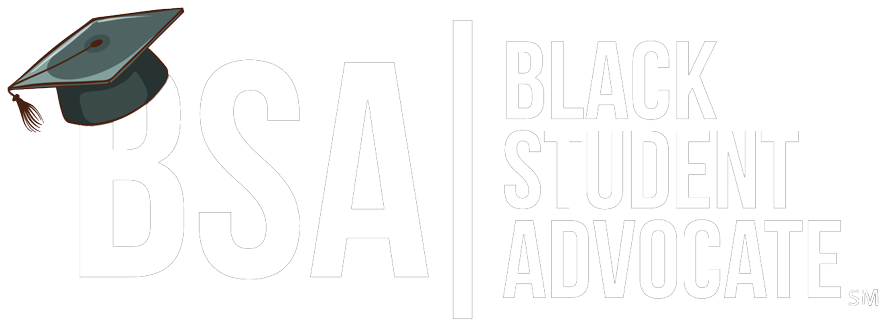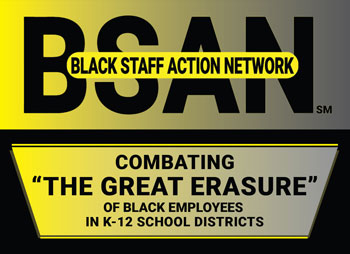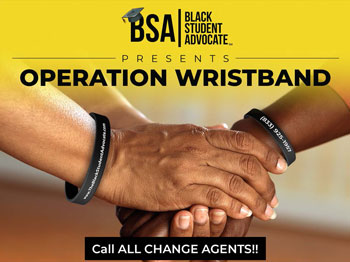Violence in schools has become one of the most pressing challenges in today’s educational landscape. From bullying and harassment to physical assaults and tragic acts of mass violence, these issues not only threaten the safety of students but also undermine the very mission of education—to nurture growth, learning, and opportunity. For many students, particularly Black students and other marginalized groups, violence in schools is compounded by systemic inequities, discriminatory discipline policies, and a lack of culturally responsive interventions.
At The Black Student Advocate Network, we believe that preventing violence in schools requires more than reactive security measures—it calls for a holistic, community-driven, and equity-centered approach. Breaking the silence means addressing root causes, amplifying student voices, and ensuring that every child has access to a safe and supportive learning environment.
This blog explores six proven strategies to prevent violence in schools—strategies that go beyond surface-level fixes and instead focus on creating sustainable systems of support, accountability, and care.
1. Understanding the Root Causes of Violence in Schools
Before schools can effectively prevent violence, they must understand why it happens in the first place. School violence does not occur in isolation; it is shaped by a complex web of social, economic, and psychological factors.
Key Drivers of School Violence:
- Bullying and Peer Aggression: Persistent harassment, whether physical, verbal, or online, can escalate into violent confrontations.
- Systemic Inequities: Students from marginalized backgrounds often face discriminatory discipline practices, stereotyping, and lack of support, which can heighten tensions.
- Unaddressed Mental Health Needs: Anxiety, depression, trauma, and stress can manifest as aggression or violence if not properly addressed.
- Exposure to Violence at Home or in Communities: Students who experience violence outside school may internalize it as normal behavior.
- Lack of Inclusive Environments: Schools that fail to foster belonging, especially for Black students and other minority groups, can inadvertently fuel feelings of isolation or resentment.
By acknowledging these root causes, educators and administrators can move away from punitive responses and instead adopt proactive, preventative solutions.
2. Building Stronger School-Community Partnerships
Preventing violence in schools requires collaboration. No school can tackle the issue alone—it takes a united effort between educators, families, community leaders, and organizations like The Black Student Advocate Network.
Practical Approaches:
- Family Engagement Programs: Parents and caregivers should be included in conversations about safety policies and conflict resolution.
- Community-Based Organizations: Partnering with nonprofits, advocacy groups, and after-school programs ensures students have access to mentorship, counseling, and safe spaces.
- Law Enforcement and Restorative Practices: While security may be necessary, schools should prioritize restorative justice over criminalization, ensuring that students—especially Black students—are not disproportionately punished.
- Cultural Competency Training: Community voices should guide training initiatives so educators can better understand and support diverse student populations.
When schools act as community hubs, they foster trust, reduce isolation, and build protective networks that deter violence.
3. Prioritizing Mental Health and Trauma-Informed Practices
Mental health is at the heart of preventing violence in schools. Students struggling with unaddressed trauma may act out in harmful ways, while those without access to coping tools may resort to aggression.
Strategies to Support Mental Health:
- On-Site Counselors and Social Workers: Every school should have accessible mental health professionals trained in trauma-informed care.
- Early Intervention Programs: Identifying at-risk students before issues escalate prevents violent incidents.
- Peer Support Systems: Student-led peer counseling groups normalize discussions about mental health and help reduce stigma.
- Mindfulness and Conflict Resolution Skills: Teaching students stress management, emotional regulation, and communication skills equips them to handle conflict constructively.
Research shows that schools with robust mental health resources report lower levels of violence and higher academic achievement. By investing in mental health, schools invest in safety.
4. Implementing Restorative Justice Over Punitive Discipline
Traditional zero-tolerance policies have historically failed to reduce violence in schools. In fact, they often disproportionately target Black students, leading to the school-to-prison pipeline. Instead, restorative justice offers a more effective and equitable alternative.
Benefits of Restorative Justice:
- Accountability Without Exclusion: Students learn to take responsibility for their actions while remaining engaged in the school community.
- Conflict Resolution Circles: Mediation sessions give all parties the chance to express feelings, repair harm, and rebuild trust.
- Equity-Centered Approach: By acknowledging cultural differences and systemic biases, restorative justice ensures fairer outcomes.
- Reduction in Repeat Offenses: Students who participate in restorative practices are less likely to re-engage in violent behavior.
Adopting restorative justice shifts the focus from punishment to healing, reconciliation, and growth, making schools safer and more inclusive.
5. Leveraging Technology and Early Warning Systems
In today’s world, technology can play a crucial role in preventing violence in schools—when used responsibly. Tools like surveillance cameras, anonymous reporting apps, and AI-powered threat detection systems can help identify risks early.
Key Tech-Based Strategies:
- Anonymous Tip Lines: Empower students to report bullying, threats, or safety concerns without fear of retaliation.
- Video Analytics and Smart Surveillance: Systems like Avigilon’s AI-based monitoring can detect unusual activity and alert staff in real time.
- Digital Monitoring of Online Threats: With cyberbullying on the rise, monitoring school networks for harmful behavior can prevent escalation.
- Balancing Safety and Privacy: Technology must be implemented ethically, ensuring it doesn’t become a tool for racial profiling or over-policing students of color.
When combined with human oversight and restorative practices, technology becomes a supportive safety net, not a surveillance weapon.
6. Amplifying Student Voices and Empowering Leadership
The most powerful strategies to prevent violence in schools come directly from the students themselves. When young people are empowered to lead, they become advocates for peace, inclusion, and accountability.
Ways to Elevate Student Voices:
- Student-Led Safety Committees: Involving students in shaping school safety policies ensures their needs are represented.
- Peer Mediation Programs: Trained student mediators help resolve conflicts before they escalate into violence.
- Youth Advocacy Campaigns: Encouraging students to speak out against violence raises awareness and builds a culture of accountability.
- Mentorship Programs: Pairing younger students with older mentors fosters guidance, trust, and positive role modeling.
By treating students as partners in prevention, schools not only reduce violence but also strengthen leadership, responsibility, and community pride.
Conclusion
Violence in schools is not an inevitable reality—it is a challenge we can overcome through collaboration, compassion, and commitment to equity. Breaking the silence means confronting uncomfortable truths: systemic inequities, mental health struggles, and harmful disciplinary practices all contribute to the problem. But it also means embracing solutions: community partnerships, restorative justice, mental health support, responsible use of technology, and above all, amplifying student voices.
At The Black Student Advocate Network, we believe that every child deserves to learn in an environment free from fear and filled with opportunity. Preventing violence in schools is not just about protecting students; it is about honoring their potential, safeguarding their dreams, and building a future where education is truly a safe haven for all.







Share This Page